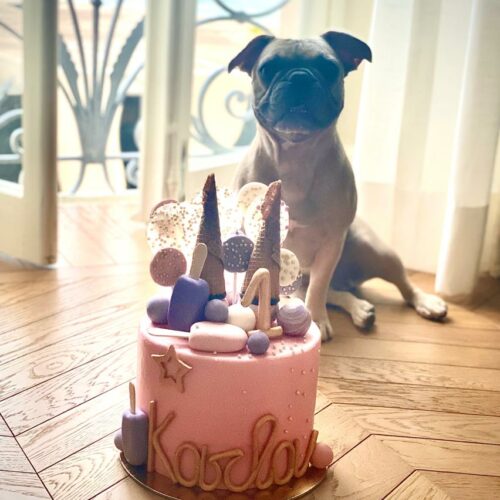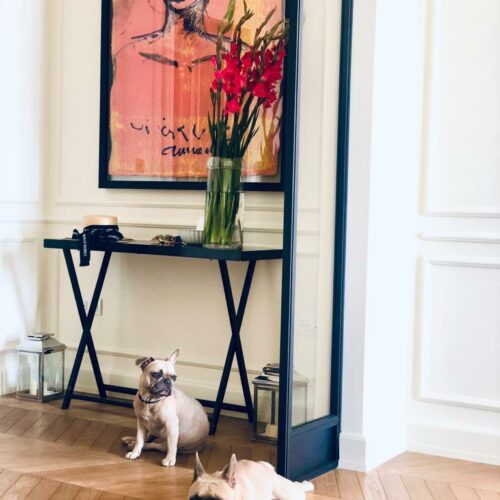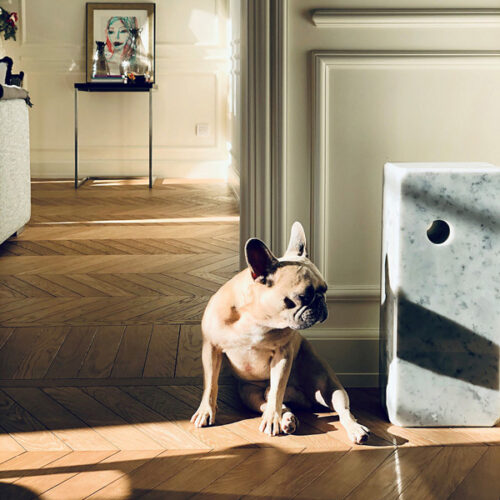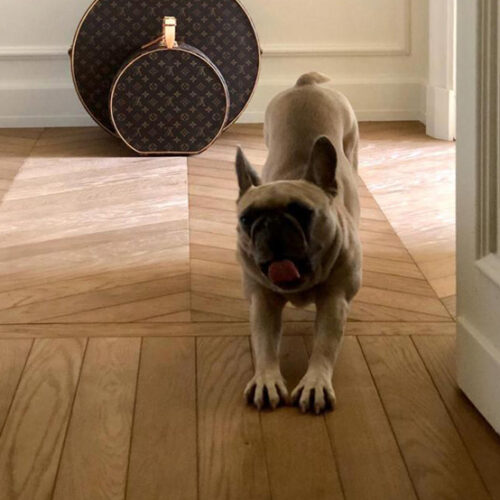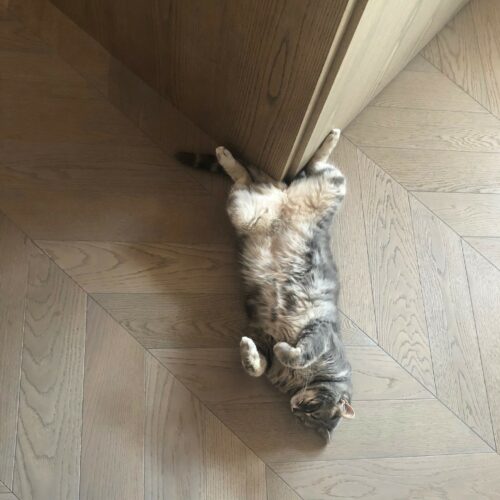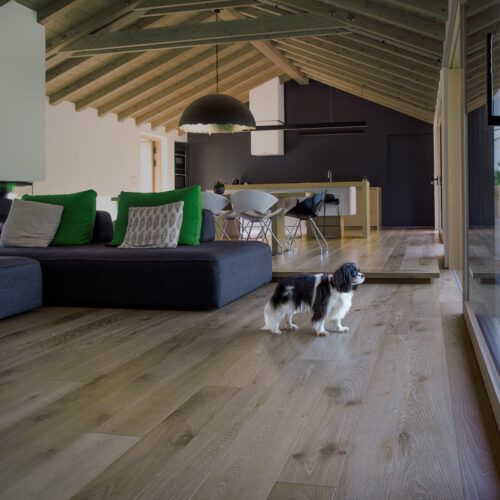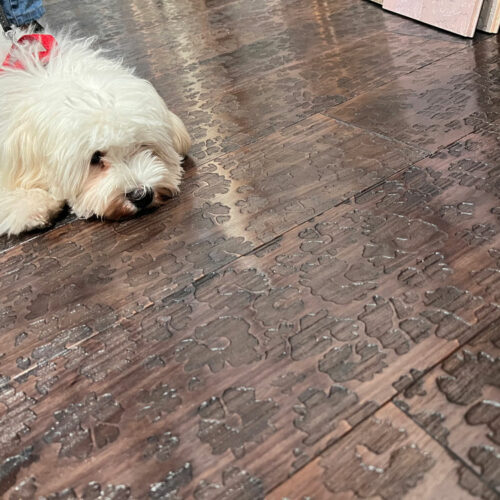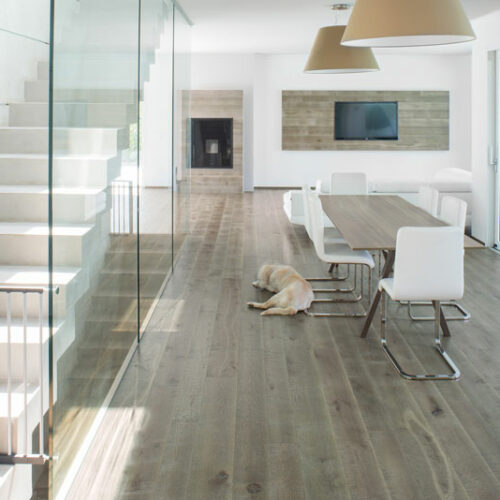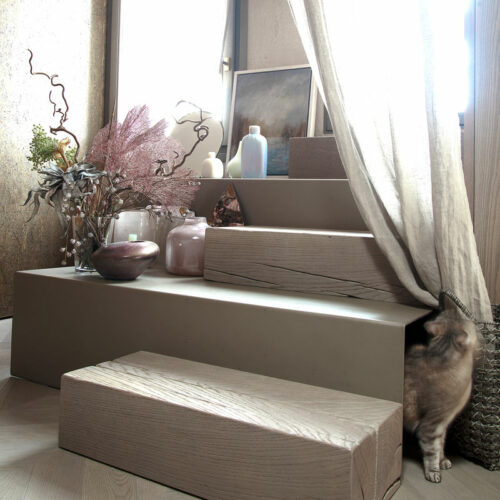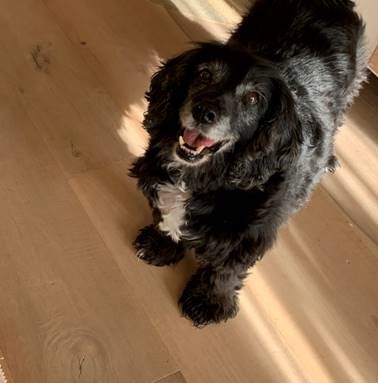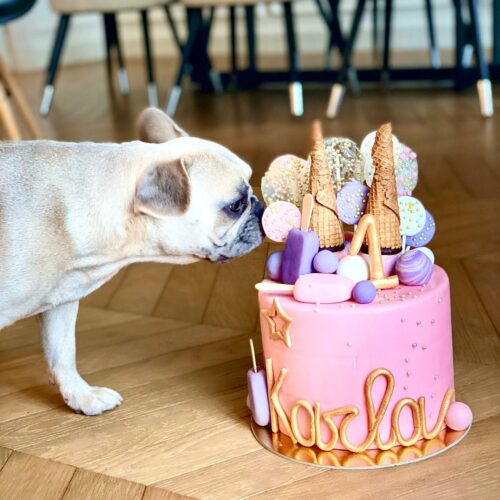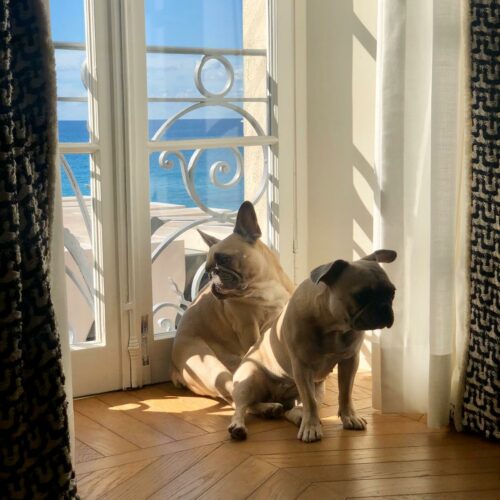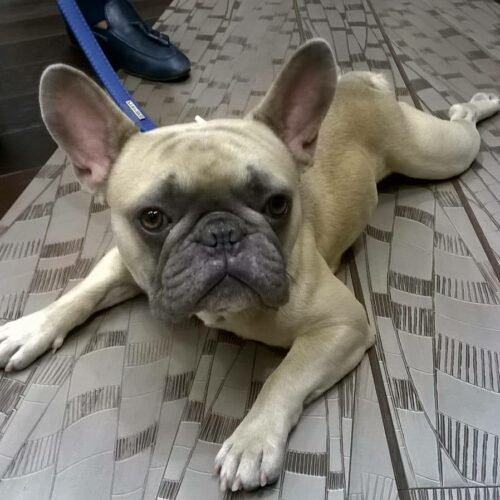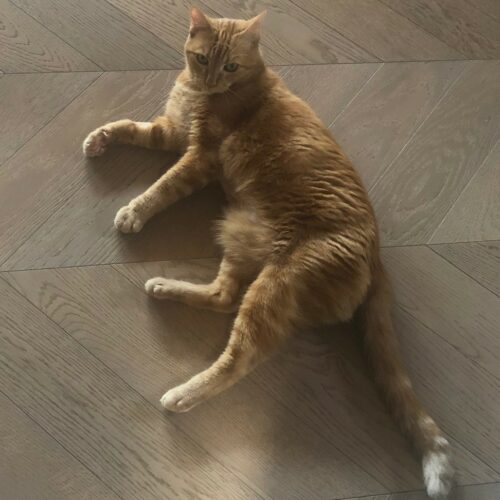With the necessary steps and choosing the right parquet, it is not a problem!
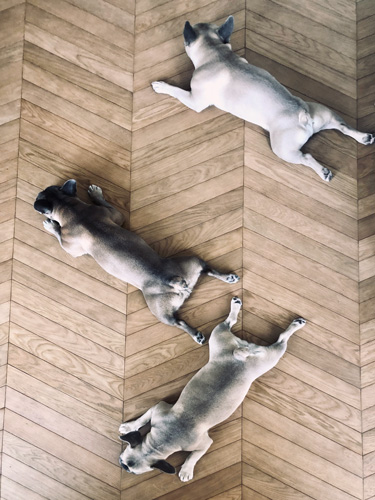
Wooden floors + dogs or cats: many think this is a recipe for disaster! In fact, they are not mutually exclusive at all… to the contrary!
Cadorin has something to say on the matter and can let all pet lovers know that it is possible to enjoy the warmth and beauty of wooden flooring even if you share your home with four-legged friends.
What are the most common concerns?
1. Pet hair
2. Stains on the parquet
3. Scratches on the wooden flooring
4. Cleaning and hygiene
It is to be expected that a four-legged friend can frequently cause such inconveniences but with the proper care and hygiene of the animal combined with the choice of the most suitable parquet, everything becomes easier.
First of all, CADORIN finishes are completed with high-quality paints and/or oils of the latest generation, with an elastic formation to expand in the event of being struck, without cracking or flaking, whilst ensuring excellent resistance to contact with acidic substances.
The surface of the wooden flooring is the main factor, regardless of the hardness of the wood, as our pets are fluffy and have padded paws so it is quite difficult for them to strike a blow to the wood and cause much damage to the flooring.
This is, of course, unless they are quite destructive and often cause objects to fall but if this is the case, then you have much bigger problems than just the parquet!
In further detail:
For a cat who loses a lot of hair, a rather smooth or only slightly worked surface is recommended for easy vacuuming, preferably in a colour similar to that of the hair, so as to be less noticeable. All this is provided that our pet does not like to use their claws…
In this case, then the surface of the parquet must be rough rather than smooth. Preference is to be given to a rougher-finished parquet also with our pooches in mind. When walking, dogs balance themselves on rough and non-slip surfaces but if the flooring is slippery, they will use their claws to stop from slipping and cling to the surface. This is why it is best to opt for surfaces that are brushed, sandblasted, saw-cut, with lime effect, planed or embossed, so that the paws slip as little as possible and there is no need to use the claws to gain purchase. In fact, such working of the surface removes the softest part of the wood, leaving the hardest and most durable part exposed and, in the case of the carved decorations in the CADORIN TRACKS PLANKS collection, the wood is even hardened to complete the processing.
And this is why having wooden flooring with a finish that is rough and imperfect, as well as being quite hard, offers excellent grip and does not easily show up any scratches and marks that the animal can make. The marks left by the claws, although cutting into the treated surface, will not be so easily noticeable, as the worked surface will be able to “camouflage” them. When combined with a colour finish, patina or gradient tone, we achieve the most aesthetic practicality.
Maintenance in such cases is very simple: the most important advice concerns how to properly clean the parquet according to the directions we suggest here: https://www.cadoringroup.com/How-to-clean-a-wooden-floor.
If there are marks and scratches, simply use waxes or patinas to cover them up in accordance with the colour of the finish. What’s more, our company provides a product information sheet that identifies the proper routine maintenance to be carried out for each type of wooden floor supplied.
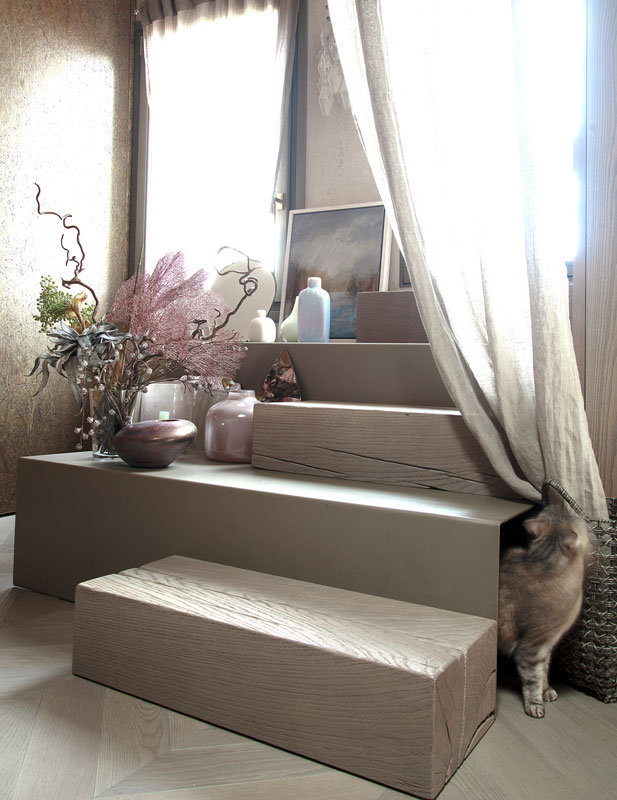
And now to the issue of wooden flooring’s resistance to pee.
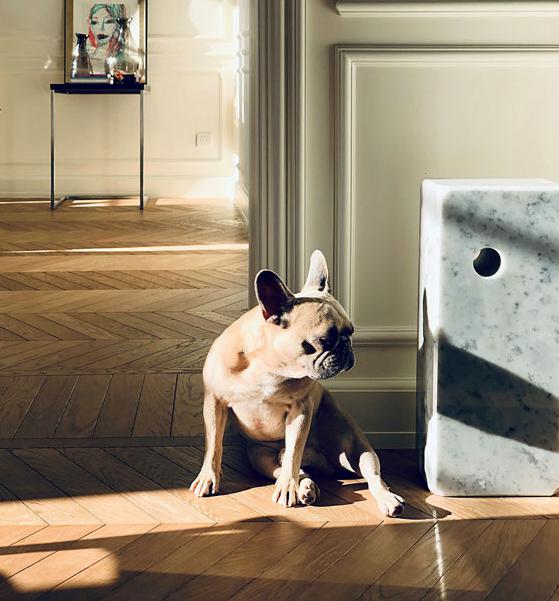
Pee is mainly acidic, ammoniac and thus burns any protective finish if it stays on the surface for a long time and happens often. CADORIN uses high-quality professional paints that offer excellent coverage and resistance to chemicals. We choose not to use ultra-resistant paints since they contain heavy metals or ceramics, or else nanotechnologies such as silver, being contrary to Cadorin’s professional ethics and pro-nature sensibility, not to mention also drastically reducing the beauty of the wood.
Continuously coming into contact with pee – or any other “acidic agent” – can actually damage the surface of the parquet. For this reason, what matters is adopting small habits that will in any case safeguard from other items in the home, such as furnishings or upholstered pieces. It is thus advisable to protect the areas where the animal habitually pees or where it is fed, whilst also cleaning dirty paws and/or drying dogs before they enter the home, as well as following the tips for cleaning and maintenance of the surface.
We should also reiterate that the beauty of wooden flooring is measured not by its infinite perfection but by the lived aspect, reminiscent of the happenings of everyday life.
